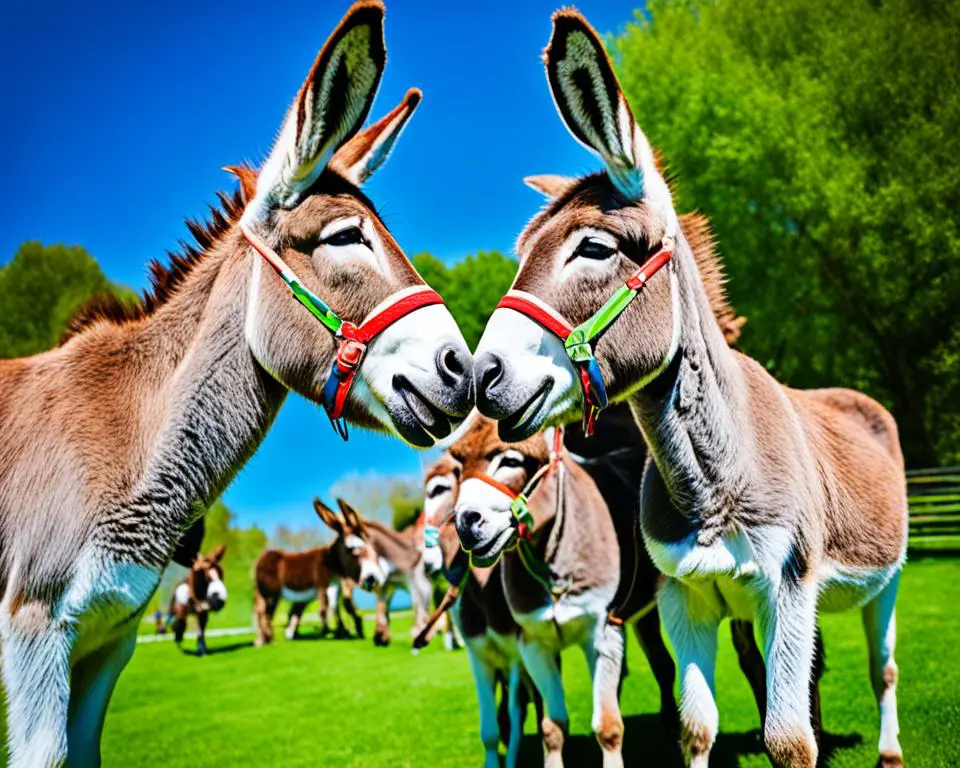As you observe birds in their natural habitat, you might wonder how they take care of their young. Bird behavior is fascinating, and avian parental care is diverse and complex. Some birds build intricate nests, while others lay their eggs on the ground. But do birds move their eggs? In this article, we’ll explore the question of whether birds relocate their eggs and the factors that influence this behavior.
Understanding bird behavior and nesting habits is crucial to appreciating their remarkable parental care strategies. Birds have evolved various reproductive strategies to ensure the survival of their offspring, and one of these is egg relocation. Let’s dive deeper into this phenomenon and explore the mechanics behind it.
Key Takeaways:
- Bird behavior and avian parental care are diverse and complex.
- Birds use various nesting materials and locations to optimize survival and reproduction.
- Egg relocation is a reproductive strategy employed by some birds to protect their eggs from predators or adverse environmental conditions.
Understanding Bird Nesting Habits
Birds have unique nesting habits that vary depending on their species and the environment they live in. Nesting is an essential part of avian reproductive strategies. It provides a safe and secure place for birds to lay their eggs, incubate them, and rear their young.
Birds use a wide variety of nesting materials, such as twigs, grass, leaves, feathers, and mud. Some birds build their nests on the ground, while others build them in trees, shrubs, cliffs, or man-made structures. The location and construction of the nest are influenced by the bird’s specific needs, such as protection from predators, accessibility to food, and exposure to sunlight.
The nesting habits of birds also adapt to their surroundings and the changing seasons. For example, some birds build multiple nests in different locations to make use of the best available resources and increase their chances of successful reproduction.
Understanding avian nesting habits is critical in appreciating their remarkable reproductive strategies. It helps identify the factors affecting the survival of birds and their offspring and provides insights into the importance of protecting their habitats and nesting areas.
The Role of Egg Relocation in Bird Reproduction
When it comes to avian reproductive strategies, egg relocation is a behavior that some bird species use to increase their offspring’s chances of survival. This practice involves moving eggs from their original location to a safer spot.
Birds have a variety of reasons for relocating their eggs. One of the most important factors is protecting them from predators. For instance, some birds will move their eggs to a new location if they detect a predator’s presence in the area. By doing so, they decrease the likelihood of the eggs being discovered and eaten.
Another reason why birds might relocate their eggs is to ensure they remain at an optimal temperature. Some species will move their eggs to a shadier or sunnier location, depending on the temperature requirements of the developing embryos. Furthermore, egg relocation can help birds compensate for nest site availability. In some cases, a bird may need to move its eggs to another location if its original nest site becomes uninhabitable.
Overall, egg relocation is a critical component of avian parental care. By moving their eggs, birds can optimize their chances of survival. Additionally, this behavior highlights the flexibility and adaptability of birds in response to environmental challenges.
Species That Move Their Eggs
While not all bird species relocate their eggs, some have developed this behavior to increase the chances of their offspring’s survival. The reasons behind egg relocation can range from avoiding predators to adapting to environmental variations. Let’s take a look at some of the bird species known for moving or shifting their eggs.
| Bird Species | Egg Relocation Behavior | Reasons Behind Egg Relocation |
|---|---|---|
| American Robin | Remove and relocate eggs to a new nest | Protection from predators or parasitism, or better access to resources |
| Common Tern | Move eggs within the same colony or to a nearby colony | Protection from flooding, predators, or other disturbances |
| Eastern Bluebird | Occasionally move eggs to a new nest box | Protection from nest competition or parasitism, or adaptation to environmental conditions |
| European Starling | Move eggs to a new nest or cavity | Protection from predators, parasitism, or adverse weather conditions |
Bird egg movement is not restricted to these species, as other birds may also relocate their eggs depending on the situation. Understanding the reasons behind egg relocation in birds can help us appreciate the resourcefulness and adaptability of these animals.
Factors Influencing Egg Relocation
Egg relocation in birds is influenced by a variety of factors. The most important ones are environmental cues, nest site availability, and predation risks. When birds receive environmental cues such as temperature changes or the presence of predators, they may choose to relocate their eggs to a safer location.
In addition, the availability of suitable nesting sites can also play a role in egg relocation. When a bird’s nesting site becomes unsuitable due to environmental changes or competition with other birds, it may choose to move its eggs to a more secure location.
Predation risks are also a major factor that influences egg relocation in birds. Birds may move their eggs to protect them from potential predators such as snakes, raccoons, or other birds. By relocating their eggs, birds can increase the chances of their offspring surviving and reaching maturity.
Understanding the factors that influence egg relocation can help us appreciate the complexity of avian reproductive strategies and the remarkable lengths that birds go to protect their offspring.
The Mechanics of Egg Relocation
When a bird decides to move its eggs, it employs a range of strategies to ensure their survival. Some birds use their beaks to pick up and transport eggs, while others use their feet to gently roll them along the ground or nest floor. In some cases, birds will carry eggs in their beaks and fly them to a new location.
Birds have also adapted physically to facilitate egg relocation. For example, some species, like the Arctic Tern, have strong beaks that are well-suited for carrying and transporting objects. Others, like the African Jacana, have long toes that are ideal for walking across floating vegetation while carrying their eggs.
The decision to move eggs is often triggered by environmental factors. For example, if a nest becomes infested with parasites or predators, a bird may relocate its eggs to a safer location. Similarly, if unfavorable weather conditions, such as heavy rain or extreme heat, pose a threat to the eggs, a bird may move them to a more suitable environment.
The process of egg relocation can be risky, as birds may be vulnerable to predation or other dangers while moving their eggs. As a result, many birds employ specific strategies to minimize risk. For example, some species may only move one egg at a time, while others will relocate their entire clutch of eggs at once.
In summary, the mechanics of egg relocation in birds are shaped by a complex suite of factors, including physical adaptations, environmental cues, and risk reduction strategies. Understanding these mechanisms is critical to appreciating the remarkable adaptive strategies employed by avian parents in the wild.
The Conclusion: Understanding Bird Behavior and Parental Care
After exploring the fascinating world of avian parental care and nesting habits, we have discovered that birds are remarkable creatures that exhibit a wide range of behaviors to ensure the survival of their offspring. From building intricate nests to moving their eggs, birds employ a variety of strategies to protect and nurture their young.
The concept of egg relocation is a particularly intriguing behavior that has been observed in several bird species. By moving their eggs to safer locations, birds can protect them from predators, harsh weather conditions, and other threats. However, egg relocation is not an easy task, and birds use a range of adaptations to ensure the success of this behavior.
Overall, understanding bird behavior and nesting habits is crucial to appreciating the diversity and complexity of avian parental care strategies. By observing these behaviors, we can gain a deeper appreciation of the natural world and the incredible adaptations that animals have developed to ensure the survival of their species.
The Importance of Protecting Avian Habitats
As we learn more about bird behavior and parental care, it becomes increasingly clear that human activities can have a significant impact on these remarkable creatures. Habitat loss, climate change, and pollution are all threats to bird populations around the world. By taking steps to protect avian habitats and reduce our impact on the environment, we can help ensure the survival of these incredible creatures for generations to come.
So next time you hear the chirping of birds outside your window, take a moment to appreciate the incredible behaviors and strategies that they use to protect and care for their young. By understanding and respecting these creatures, we can help ensure that they continue to thrive in our world.
FAQ
Q: Do birds move their eggs?
A: Yes, some bird species do move their eggs. This behavior is known as egg relocation and is a strategy employed by certain birds to optimize the survival of their offspring.
Q: What are bird nesting habits?
A: Bird nesting habits refer to the behaviors and strategies that birds employ in building and maintaining their nests. These habits vary among species and can include the choice of nesting materials, location selection, and nest construction techniques.
Q: Why do birds relocate their eggs?
A: Birds may relocate their eggs for various reasons. One common reason is to protect the eggs from predators or adverse environmental conditions. By moving their eggs to safer locations, birds increase the chances of their offspring successfully hatching and surviving.
Q: Can you give examples of bird species that move their eggs?
A: Yes, there are several bird species known to exhibit egg relocation behavior. For example, the American Robin (Turdus migratorius) and the Killdeer (Charadrius vociferus) are known to move their eggs to different nest sites if they perceive a threat or disturbance.
Q: What factors influence egg relocation in birds?
A: Various factors can influence egg relocation in birds. Environmental cues, such as changes in temperature or resource availability, can prompt birds to move their eggs. Nest site availability and the risk of predation also play a role in determining whether birds will relocate their eggs.
Q: How do birds physically move their eggs?
A: Birds use their beaks or feet to carefully grasp and transport their eggs. They may carry them in their beaks or transfer them from one location to another using their feet. Some birds even roll their eggs with their chests to move them to a safer spot.











